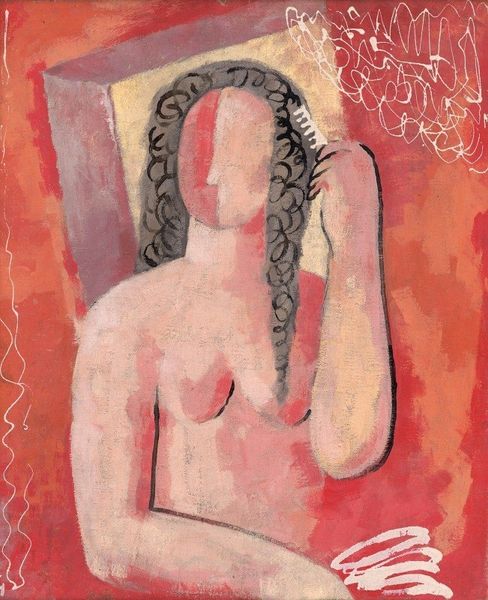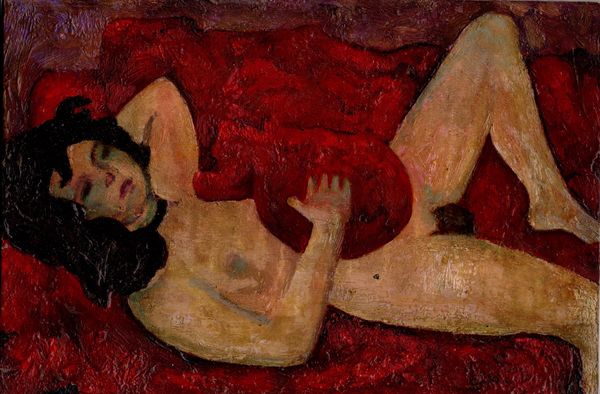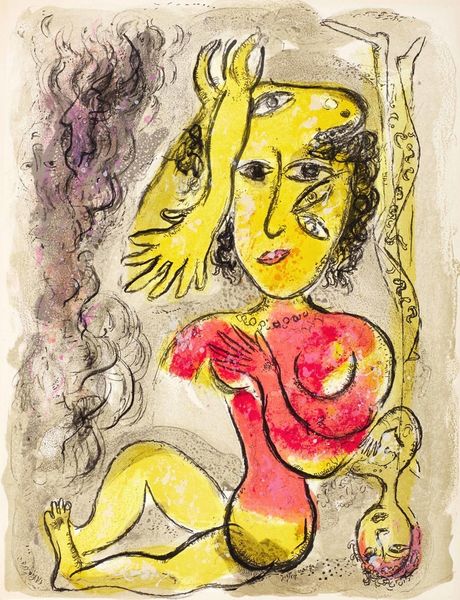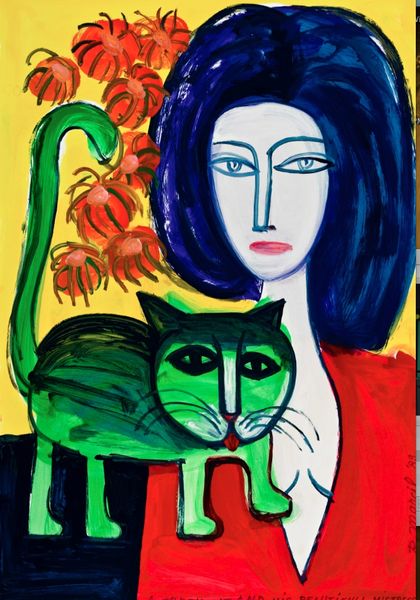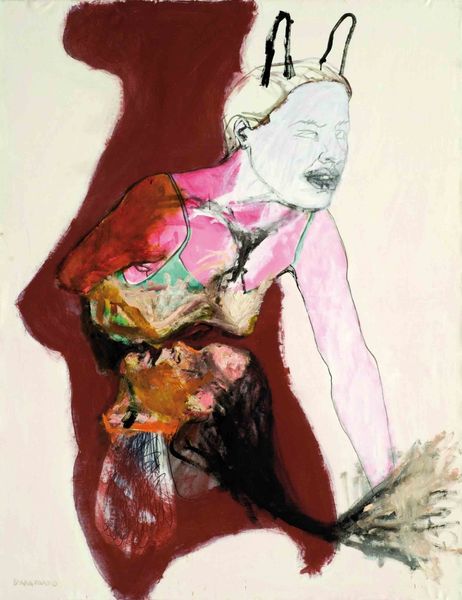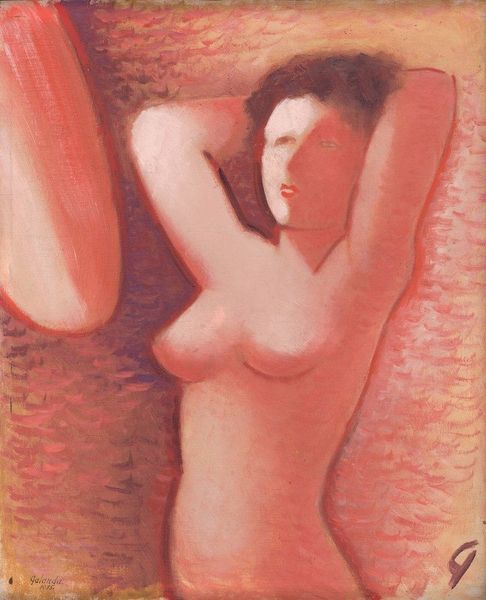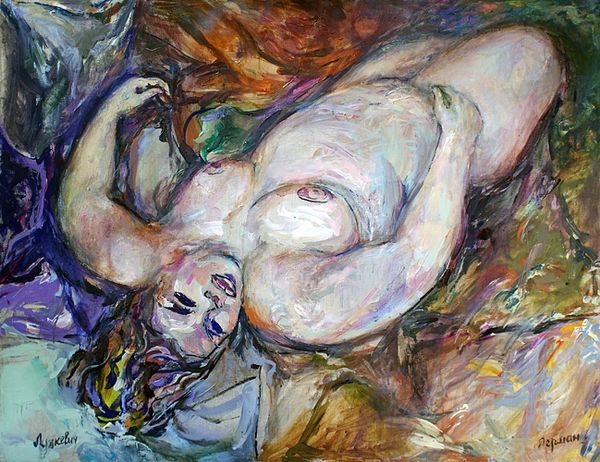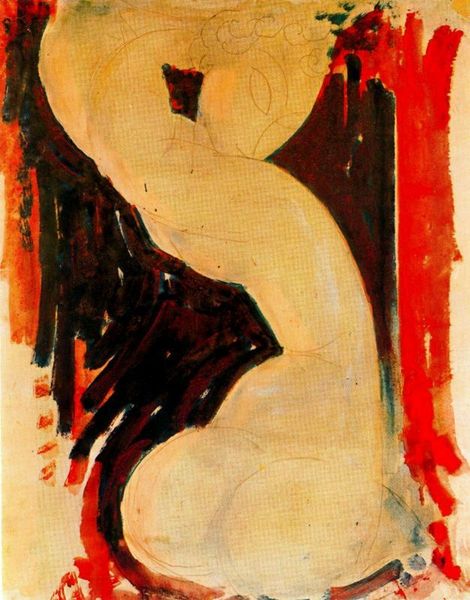
Dimensions: 110 x 75 cm
Copyright: Patrimoine Marcil
Curator: René Marcil’s "La Faune de Paris" from 1989 is rendered with ink and paint. It depicts a reclining nude figure. What are your first impressions? Editor: The vibrant red is immediately striking. There's something almost unsettling about its boldness. The composition, with the angular figure and hovering bird, feels unresolved, like a sketch caught mid-thought. Curator: Let’s talk about the choice of materials. The use of ink alongside paint speaks volumes. It could point to a desire for accessibility. Ink being a cheaper and more available alternative challenges high art practices that emphasize costliness. What looks like Neo-Expressionist or graffiti-art is presented without the typical grandiosity or art world fanfare. Editor: I can see that angle. Formally, however, the crude application creates an intriguing contrast. The flatness of the red backdrop throws the simplified figure forward. The thick, almost sculptural quality of the white paint in the bird offers a textural play against the comparatively delicate lines defining the woman's body. I would consider its Neo-Fauvist qualities. Curator: Considering its socio-political dimension is just as rewarding. The piece emerged in the late 1980s, and the playful title, referencing Parisian wildlife, feels ironically linked to discussions around social divisions and environmental degradation—consumption of urban nature! The woman herself might also represent an engagement in questions about representation, exploitation and gender in Neo-Expressionism. Editor: That is indeed very compelling. But in focusing purely on context, are we perhaps missing some fundamental components? The relationship between the woman and bird creates an undeniable symbolism that moves beyond social critique. Are they merely coexisting? Is the bird acting as her spirit guide, or her doom? This dream-like visual texture suggests something else altogether. Curator: Both levels are, of course, inseparable in the creative gesture. But viewing "La Faune de Paris" helps expose art’s often obscured labor and social roots. Editor: I find its visual tensions linger long after any initial thematic probing has been carried out.
Comments
No comments
Be the first to comment and join the conversation on the ultimate creative platform.
